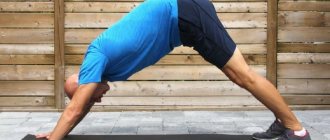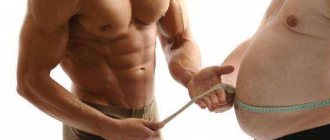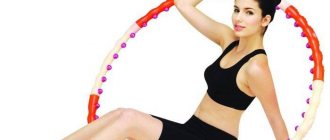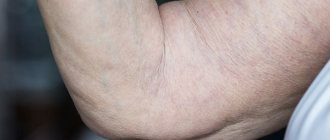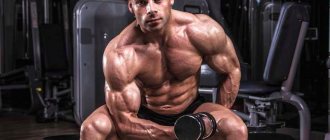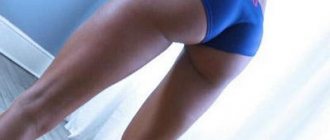Weakness in the arms is a dangerous symptom that should be dealt with by a neurologist. A targeted interview and identification of accompanying signs allows us to assume what happened to the person. other cases, when weakness occurs in the midst of complete health, recurs or increases, requires prompt consultation with a doctor.
There are many reasons for the development of weakness, the main part being inflammatory and degenerative diseases of muscles, nerves and blood vessels.
At CELT you can get advice from a neurologist.
- Initial consultation – 3,200
- Repeated consultation – 2,000
Make an appointment
Causes
In general terms, the reasons for the development of weakness in the hands look like this:
- compression or constriction of the spinal cord caused by degenerative-dystrophic processes in the vertebral bodies, joints, ligaments, especially intervertebral hernias;
- disturbances of cerebral or spinal (spinal cord) blood flow, most often ischemic stroke;
- injuries - domestic, sports or industrial;
- calcium deficiency;
- congenital muscle dystrophies or progressive myopathies;
- autoimmune diseases - multiple sclerosis, Guillain-Barré syndrome, Charcot's disease, systemic lupus erythematosus, rheumatoid arthritis;
- damage to the aortic arch or its branches;
- various vasculitis or vascular inflammation - Raynaud's syndrome, Buerger's disease;
- arthrosis and arthritis;
- parkinsonism syndrome;
- hyperthyroidism or increased thyroid function;
- scalenus syndrome or anterior scalene muscle, when the muscle compresses the roots of the brachial plexus;
- inflammation or neuritis of one of the large nerves supplying the upper limb;
- tunnel syndrome, when the nerve is compressed in some anatomically narrow place;
- metastases of tumors of internal organs;
- myasthenia gravis;
- damage to the peripheral nerves of the hand due to diabetic or alcoholic causes;
- emotional stress.
Hypotonia - weak muscles in a child
Often in children under one year old, such a pathology as muscle weakness occurs; it is most often associated with developmental disorders and with hypoxia, from which the baby suffered during pregnancy. But sometimes muscle weakness can be a sign of a serious illness that requires timely treatment.
Usually, a neurologist immediately detects hypotonicity if it is present, since the baby is developmentally delayed and cannot hold his head up, roll over or walk. Older children may have deformed legs and get tired quickly during physical activity. It is very important to immediately identify the pathology and begin to treat it in order to avoid serious complications in adulthood.
Hypotonia is a disorder of muscle tone, in which the muscles are always in a too relaxed state. Normally, muscles in both children and adults contract constantly to maintain normal functioning of the body. Thanks to muscle tone, a person can stand and sit, although these positions are static, the muscles still contract.
With hypotonicity, the muscles are weakened, the child cannot sit and stand normally, since the fibers simply cannot withstand such a load. If this condition is not treated, the baby cannot develop normally. In addition, hypotension can also occur against the background of serious illnesses.
Hypotonia in infants usually occurs due to birth trauma or lack of oxygen in the womb. This condition is quite correctable; for treatment, gymnastics, massage, sometimes physiotherapy, and less often drug treatment are prescribed if therapeutic treatment does not produce an effect. It is important to understand that the sooner you start treating hypotension, the faster it will pass, and the fewer consequences there will be.
When should you see a doctor?
If you are only worried about weakness in your arms - one or both, but nothing else is bothering you, then you need to contact them within the first 24 hours. The peripheral nerve is a sensitive formation; its myelin sheath, without which normal impulse transmission is impossible, is destroyed very quickly by inflammation or compression. With some compression, not only the shell is destroyed, but also the central fiber - the axon. If myelin can be restored in a relatively short time (we are not talking about hours or days, but weeks and months), then with the axon things are more complicated. The sooner nerve damage is stopped, the higher the likelihood that a person will remain able to work.
If weakness in the arms, even minimal, is accompanied by dizziness, headache, unsteadiness of gait, and vomiting, then the likelihood of a stroke is high. In this case, the clock counts. Medical assistance is required immediately; treatment cannot be delayed until the morning, or even for several hours. The same applies to traumatic brain injury, in the acute period of which the arms often weaken. Time is truly invaluable in these situations.
Hands don't grow
Arms not growing is a fairly common problem among athletes, although, of course, as a rule, the real problem is faced by only a few with genetically lagging arm muscles. Arms may not grow for various reasons, for example, there may simply be few muscle cells in these muscles, which will limit the possibilities of their hypertrophy, or the muscles may be short, the biceps may have a low peak and all that. Partially, all this can be leveled out, but if some muscle group “falls out,” then it will always be lagging behind. Do not flatter yourself with snotty hopes that everything is in the hands of man, this is not so. If it were possible to completely level out the lag of one or another muscle group, then at Olympia all athletes would have ideal muscles, but this is not true!
Nevertheless, as mentioned above, it is possible to partially level out the lag, although if the muscles do not have a beautiful shape, then this deficiency can only be corrected with the help of “oils”. At the same time, before introducing any injections into yourself, you should hypertrophy the muscle group as much as possible, since otherwise these injections will be too noticeable. This does not mean that we recommend using synthol! Any “ pharma” should For a “natural amateur,” it will be enough to simply hypertrophy the muscles well, which will already hide their shortcomings. We have already written in detail about why arms do not grow in an article devoted to a training program with specialization in arms, so if you want to understand the issue in more detail, you should read this article .
Here we will analyze only a practical way of organizing the training process to level out the lag of the arm muscles. Therefore, the first thing you need to do is to generally understand whether your hands are “growing” or “not growing”! How to do it? Your neck, calf and arm should be the same in volume, which creates an athletic body silhouette. If you simply have no muscles, a thin neck and small calves, this does not mean that your arms are not growing, it means that you simply have not pumped up yet! If you are a beginner, then you should use the training program for beginners, then spend 3-6 months training according to the three-day split program, then use the “Ukrainian school” and only after that you can use the training program with specialization in hands for the first time.
The duration of the program is 3-4 months, while the main rule is maximum specialization, that is, you must minimize the load on all other muscle groups and maximize the volume and intensity of training of the priority muscle. Ideally, you should train only the target muscle group, but in practice few people will do this, and for a “natural” person this may not be the best solution, since growth factors are mainly developed from heavy basic exercises. Since arms can not grow for two reasons: the triceps are lagging behind, or the biceps are lagging behind, then there are 2 options for the program. The diet for both programs is the same, in general, nothing special, the usual calorie surplus, more fiber and animal proteins, the only thing Well, you shouldn’t think that you can “dry out” at the same time, because if you cut down on calories, then your arms will have nothing to grow from!
Arms don't grow: biceps program
Monday – Legs and Chest Barbell Squats – 4 sets of 8 reps Bench Press – 4 sets of 8 reps Barbell Rows – 3 sets of 8 reps
Tuesday – arms Biceps curls – 5 sets of 6 reps Reverse grip press – 5 sets of 15 reps Hammer curls – 5 sets of 6 reps Cable arm extensions – 5 sets of 15 reps
Thursday – back and rear deltoids Reverse-grip bent-over barbell rows – 5 sets of 6 reps Lav rows – 5 sets of 8 reps T-bar rows – 5 sets of 6 reps Lee Haney rows – 4 sets of 8 reps
Saturday – Arms California Press – 5 sets of 6 reps Spider Curls – 5 sets of 15 reps French Bench Press – 5 sets of 8 reps Wide Grip Curls – 5 sets of 12 reps
Arms don't grow: triceps program
Monday – Legs and Shoulders Barbell Squats – 4 sets of 8 reps Military Press – 4 sets of 6 reps Overhead Press – 4 sets of 8 reps
Tuesday – Arms California Press – 5 sets of 6 reps Spider Curls – 5 sets of 15 reps French Bench Press – 5 sets of 8 reps Wide Grip Curls – 5 sets of 12 reps
Friday - Chest and Back Bench Press - 4 sets of 8 reps Incline Press - 4 sets of 8 reps Lat Pulldown - 4 sets of 8 reps Reverse Grip Bent Over Rows - 5 sets of 6 reps
Saturday – arms Biceps curls – 5 sets of 6 reps Reverse grip press – 5 sets of 15 reps Hammer curls – 5 sets of 6 reps Cable arm extensions – 5 sets of 15 reps
Training programs for the gym
Plank
One of the most effective exercises for strengthening arm muscles is the plank. Starting position: lying down, hands shoulder-width apart, feet together. You need to hold out in this position for as long as possible. For a quality workout, you can record your results by measuring them with a stopwatch. If you strive to set a new record every day, you will notice how in just a few days your arms will become noticeably stronger and your shoulders will take on new shapes.
The Best Workout Program for Physical Weakness
- Resistance training. It is best to do exercises with progressive resistance. These are exercises with a gradual increase in the load on the muscles by increasing the weight and the number of repetitions and approaches. This approach increases lower body strength as well as flexibility and strength in the knee and hip, which are essential for improving mobility, flexibility, and walking speed.
A typical program would include one set of eight to ten different exercises performed at a consistent intensity of five to six on a scale of 10. The exercises target the major muscle groups of the upper and lower body. Enlist a personal trainer to advise you during your workouts on maintaining minimum intensity levels and show you how to determine when to increase weight, number of reps, and sets.
Resistance training - exercises with a gradual increase in load!
- Aerobics exercises. You will have to start at a lower intensity. However, the best results will be achieved with moderate to vigorous aerobic activity. With this load, your heart rate increases to 70-80% of your maximum at the most intense points during training.
This level of intensity maximally saturates the body with oxygen, which increases cardiac endurance. Aerobic exercise should be performed for 20-30 minutes at least three days a week. For best results, hire a trainer to help you create a personalized program and set your maximum heart rate.
Aerobics classes for 20-30 minutes at least three times a week!
You can learn balance exercises by taking a tai chi or yoga class.
Tai Chi - a balance exercise - reduces the risk of injuries and falls!
How to become stronger as you age? What to do?
The good news is there are ways to prevent physical weakness and reverse its effects! Research has shown that the best approach is to use a combination of strength training, aerobic training and balance exercises.
Not surprising, right? This is the basic recipe for meeting your regular fitness needs. This set of exercises helps build and maintain muscles, improve joint flexibility and improve cardiovascular health.
Any exercise program should be individualized and tailored to your specific needs and current health status. Talk to your doctor about creating one. However, a 2015 meta-analysis presented at the Nestlé Nutrition Institute Seminar Series showed the success of the program below. These are good guidelines to keep in mind.




